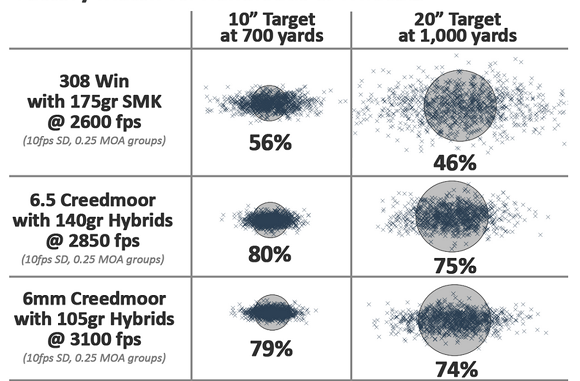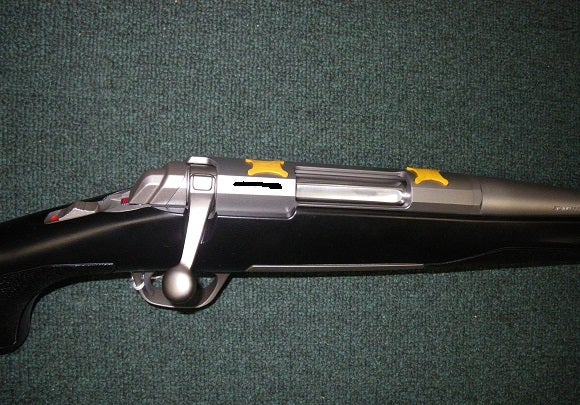So I bought a rifle. I hemmed and hawed over a couple different centerfires, but ultimately settled on a known quantity – a Browning X-bolt Long Range Stalker chambered in 6.5 Creedmoor. As far as caliber choice, I was torn between a 7 mm-08 and .270 Remington (same caliber as “Betsy”; the Boss-equipped Browning A-bolt that both dad and I shoot like a dream). Ultimately, my research led me down a slightly different path in interest of minimizing recoil, matching down-range trajectory with many of the long gunners, and placing cartridge accuracy above all. Behold, the 6.5 Creedmoor.
Ever since the last evening showdown with a big black bear in NW Montana in 2014, the temptation of upgrading rifles to be more compatible with proficiency in the 300-500 yard range has been fluttering around in my head. Dad’s A-bolt performs at that range, especially now that he has it topped with quality optics, and I wanted to join suit. That big bruin would have been dead to rights.
I won’t try to convince you why the 6.5 Creedmoor is better than a .308 and I won’t weigh the merits of the 6.5 CM versus the aforementioned 7 mm-08. Those debates have been had by far wiser rifle snobs than I. I will, however, tell you why I bought an A-bolt in the caliber I chose (besides the ridiculously good deal I got on it!!).
Barrel life…NOT!! Back to those rifle snobs, one of the favorite arguments against the 6.5 CM by .308 “homers” is that of abbreviated barrel life. I’m sure this is true if your weekends revolve around long-distance shooting matches – mine don’t (and won’t). For a hunter like myself, what’s the difference between a barrel w/ life expectancy of 3,000 shots fired versus 6,000? Zero.
Let me illustrate–if a guy totaled 200 lifetime takedowns of game with a single rifle in a single caliber and let’s assume a liberal 2-shots fired/kill average, there’s 400 shots. (An aside, dad and I went through a 20-round box of .243 Remington Core-lokt ammunition and logged 19 kills during one span in the mid-2000s in North Carolina!) If you own that rifle over 50 years and you consistently check your zero w/ a pre-season firing range tune-up, let’s assume a 10-shot average/year there. That’s an extra 500 shots. Let’s say you manage another couple firing sessions per year where you’re really stretching your limits and attempting to improve your mid-long range proficiency – let’s call those 15/shots/session, 30/year, over 50 years would be another 1500 rounds fired. (Disclaimer: I’m not saying 2 range session/year would make you an ethical and proficient long-range marksman; re-read above mid-range—this is the 300-500 yard range at which I’d like to become MOA-accurate). Long story long: 2,400 shots later, you’re dead of old age and your rifle still has some life left in the barrel. For the 99% of us, stop with the barrel life argument.
Knockdown…NOT!! Knockdown, smockdown. Place a bullet in the lungs, watch animal fall over quickly. I’ve never been infatuated with big calibers, wide-cutting broadheads, and heavy poundage bows. I watched my dad kill LOTS of deer with an old Fred Bear compound that slung aluminum arrows at the blazing rate of 167 FPS. Between dad and I, we’ve killed a couple hundred+ whitetail with the .243. There are guys that swear by the 7 mm-08 as a go-to youth gun for elk, and for crying out loud—the .30/30 still probably holds the record for most Western game taken in history. And for those interested, there are plenty of long-range guys tipping over muleys and elk at longer ranges than I’ll ever even practice with 6.5 CMs. I’ve always adhered to the “shoot something you shoot well” philosophy and then things like knockdown hardly ever matter.
So why did I choose the 6.5 CM?
First, accuracy. They are deadly accurate, match-grade precision and incredibly popular with the target shooting guys. Really anything <1 MOA will allow me to achieve my accuracy objectives at 500 yards, and it’s likely I’ll discover a factory load that performs in the 0.6-0.8 MOA range before it’s all said and done with. With a 26” barrel and “normal” rifle weight, I should be able to shoot it exceptionally well off bench or in field.

Second, ballistic trajectory. Also (and this is completely beyond my level of gun nerdiness), apparently some dimension of the bullet profile means that wind drift is significantly less in the Creedmoor than with other similar-grain bullets. I could throw up a wind drift chart or bullet drop figure, but this simulation tells the story best I think (full information here: Precision Rifle Blog). What’s important to know is that the simulation was “based on 0.25 MOA extreme spread, and good wind-calling ability, which means we’re able to call the wind speed within 1.25 mph 68% of the time, and within 2.5 mph 95% of the time.” Tall orders but you get the point–with a 6.5 Creedmoor, I should hit my target more often than with other “comparable” calibers.
Last, recoil. I’m a small guy and I don’t like recoil. The 6.5 CM is comparable or edges out all the above mentioned calibers in the different aspects I’ve mentioned so far. In this area, the 6.5 CM blows them away (except for .243 of course). Not that shooting a .270 is like cranking off an elephant gun, but did I mention? I don’t like recoil.
Can’t wait to start shooting it, but first need to settle on a scope to top it with. Well under 6 months until its first field test up on Kodiak Island!!




 Your Privacy Choices
Your Privacy Choices